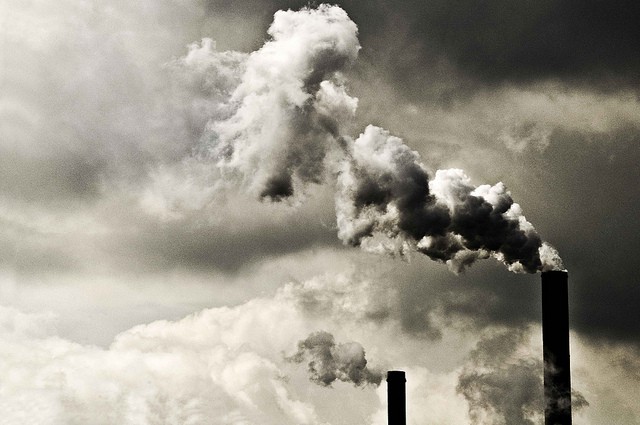Rio Tinto, the second-biggest miner of the world, plans to make its entire operations reach net-zero GHG emissions by 2050. To reduce its carbon footprint, the company also plans to invest US$1 billion over the coming five years. The mining giant has also committed to cut its emissions by 15% by 2030.
The decision was followed by investor pressure and it stands in tandem with other Australian businesses that intend to work in the same direction. However, for the Australian Government that has been busy attacking the Labor opposition over its net-zero target commitment, it was not a welcoming decision.
Rio Tinto’s commitment to reduce emissions along with other global miners seems comparatively easier than BHP as it does not mine oil or coal.
Unlike BHP, the mining giant refused to set any target to cut “scope 3” emissions that its customers produce.
Jean-Sébastien Jacques, the chief executive of the company, announced the full-year results of the company on Wednesday and warned that its operation could also hamper due to the deadly coronavirus epidemic.
Although Chinese steel mills are the major customers of the company, Jacques confirmed that the iron order books of Rio Tinto were full.
“But we are likely to see some short term impacts such as supply chains and possibly even provision of services from Chinese suppliers,” he said.
“We acknowledge that there will be some short-term volatility and uncertainty, but we are very well positioned.”
Jacques said that the new climate commitments of the miner added to an overall 46% reduction in its emissions since 2008. He also pointed out that a significant portion of the said emission cut came as a result of the selling of operations that produce loads of pollution.
Rio Tinto has to make its every new business carbon neutral in the next decade in order to achieve its target of 15% total emissions cut by 2030.
The company was also open to buying carbon offsets if needed though it was “last port of call,” Jacques said.
Jacques said that although the company would use its existing technologies to achieve the emissions cut target through 2030, Rio Tinto would be keen on developing new methods to offset carbon production, investing a part of its US$1 billion.
“We have approved around US$100m last week for the Pilbara, I think it would be a good example of things we may look at going forward,” he said.
“It’s a 34MW solar photovoltaic plant and a battery system of 12MW per hour storage facility at one of our operations.
“By doing this investment … we’ll be able to take out about 90,000 tonnes compared to commercial gas power generation.”
The move was equivalent to taking 28000 cars off the road or about 3% of Rio Tinto’s emissions from the Pilbara plant, Jacques explained.
“At the same time we are investing serious money in order to find the technology for the future. We have only a pathway for the next 10 years. If we don’t work today on options beyond the next 10 years, we’ll never get there.”
Jacques defended the company’s decision of not setting any scope 3 targets saying that it was something its rival BHP did in July as part of its $400 million program to reduce emission.
“We will not set targets for our customers,” he said.
“Having said that, we are looking to partner with our customers and the customers of our customers to look for ways to work together in order to improve emissions across the value chain.”
Jacques pointed out some examples, including a deal the company struck with giant Chinese steel mill and key customer Baosteel in September in order to lower emissions from steelmaking. Another deal was made with Apple and the government of Quebec two years back with respect to aluminum.
“Remember, we are the only large diversified mining and metal company that is not selling either coal, and the carbon associated with coal, or drilling oil and gas and the carbon associated with oil and gas.
“So if you step back, if you believe in climate change – and we do believe in climate change – we know we need to have more high-quality copper, high-quality aluminium, in order to be part of the solution.”
Last May, at the federal election, the conservative Coalition government of Australian prime minister Scott Morrison campaigned hard against its opposition Labor’s net-zero target as part of its re-election strategy. In recent weeks, it seems to have revived its attacks on the opposition over the policy by demanding costings and raising the spectre of soaring energy prices.
When asked if Rio Tinto would want the government to commit to net-zero by 2050, Jaques said: “I don’t think that would make a massive difference.”
“What is absolutely clear is that for us to be able to meet our net carbon target by 2050, there will be a need for new technology.
“Any government – so I’d make a broad point – that can provide us with some smart, clever policy to create a pathway, a framework for us to accelerate our development in that space, would be more than welcome.”
Andrew Gray, the head of environmental, social and governance issues at Australia’s biggest superannuation fund, the $175bn AustralianSuper, said the move of Rio Tinto move came after pressure from investor group Climate Action 100+.
“These are issues that AustralianSuper as a lead investor has been engaging with Rio on for more than two years as part of the Climate Action 100+ initiative,” he said.
“We look forward to continuing to engage with Rio to fulfil these commitments.”
The declared profit after tax of the company for 2019 stood at US$7bn as compared to US$13.9bn in 2018.






